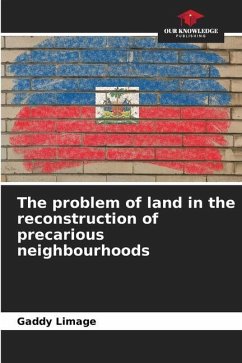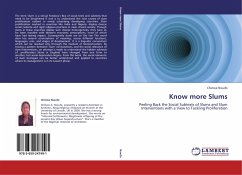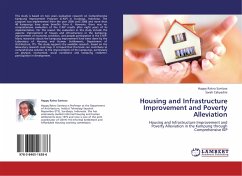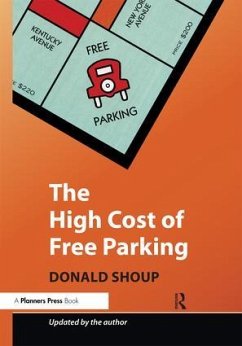
Working for a World Free of Poverty and Slums
INTRA-CITY DIFFERENTIALS IN URBAN POVERTY AND SLUMS IN NAIROBI, KENYA: MEASUREMENTS, DETERMINANTS, CONSEQUENCES, AND IMPLICATIONS
Versandkostenfrei!
Versandfertig in 6-10 Tagen
51,99 €
inkl. MwSt.

PAYBACK Punkte
26 °P sammeln!
This dissertation research intends to document methods for measuring and analyzing urban poverty in developing Cities by using Nairobi as my primary case. Through recoding and aggregating Census data, I propose to construct a composite material poverty index using principal components analysis. Next, I will build a 2SLS (two stage least square regression) model to identify the most significant determinants of material poverty. Finally, a cross-sectional regression analysis will be undertaken to examine the effect of living in a slum and residential segregation of slums from non-slums on local ...
This dissertation research intends to document
methods for measuring and analyzing urban poverty in
developing Cities by using Nairobi as my primary
case. Through recoding and aggregating Census data,
I propose to construct a composite material poverty
index using principal components analysis. Next, I
will build a 2SLS (two stage least square
regression) model to identify the most significant
determinants of material poverty. Finally, a cross-
sectional regression analysis will be undertaken to
examine the effect of living in a slum and
residential segregation of slums from non-slums on
local child mortality rate. The findings will have a
three-fold implication for anti-poverty or anti-slum
practices. First, a composite material poverty index
has a distinctively empirical utility for the direct
measurement of the living conditions of the urban
poor and slum dwellers. Second, lower population
density significantly decreases material poverty ,
which lends some support to anti-slum strategies
aiming to de-densify the slum areas. Lastly, de-
segregating slum dwellers from non-slum dwellers is
effective at least from a health perspective.
methods for measuring and analyzing urban poverty in
developing Cities by using Nairobi as my primary
case. Through recoding and aggregating Census data,
I propose to construct a composite material poverty
index using principal components analysis. Next, I
will build a 2SLS (two stage least square
regression) model to identify the most significant
determinants of material poverty. Finally, a cross-
sectional regression analysis will be undertaken to
examine the effect of living in a slum and
residential segregation of slums from non-slums on
local child mortality rate. The findings will have a
three-fold implication for anti-poverty or anti-slum
practices. First, a composite material poverty index
has a distinctively empirical utility for the direct
measurement of the living conditions of the urban
poor and slum dwellers. Second, lower population
density significantly decreases material poverty ,
which lends some support to anti-slum strategies
aiming to de-densify the slum areas. Lastly, de-
segregating slum dwellers from non-slum dwellers is
effective at least from a health perspective.












